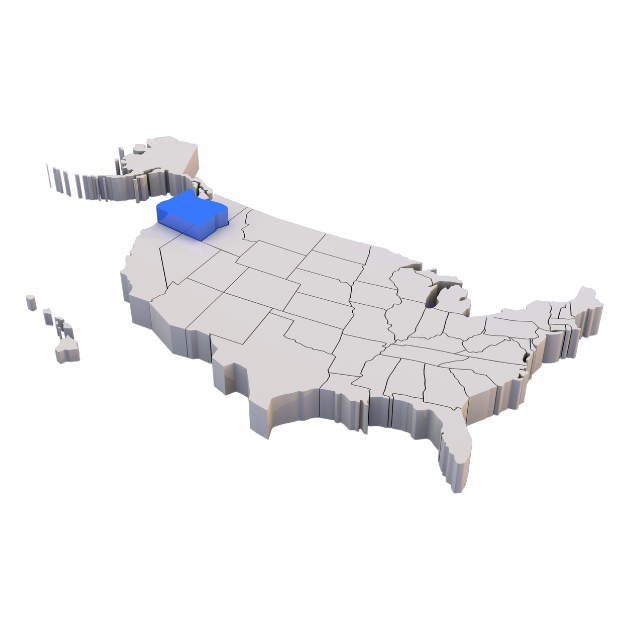Oregon Cannabis Laws
Oregon has been a pioneer in cannabis legislation, with medical marijuana legalized in 1998 and recreational use approved in 2014 through Measure 91. The state operates a dual regulatory system: the Oregon Health Authority oversees medical marijuana, while the Oregon Liquor and Cannabis Commission manages adult-use marijuana. Key regulations include possession limits, packaging and labeling requirements, and stringent data privacy rules for consumers.
Overview
Medical marijuana has been legal in Oregon since 1998, with recreational use approved in 2014 following the passage of Measure 91. This measure, known as the “Control, Regulation, and Taxation of Marijuana and Industrial Hemp Act,” established a regulatory system for adults 21 years and older to purchase cannabis for personal use from licensed businesses. The Oregon Health Authority (OHA) oversees the medical marijuana program, while the Oregon Liquor and Cannabis Commission (OLCC) manages the adult-use program. Key regulations include possession limits, packaging and labeling requirements, and taxation. Recreational purchases are subject to a 17% state excise tax and a possible additional 3% local tax, while medical marijuana remains untaxed. These laws ensure a controlled and safe cannabis market in Oregon.
Packaging and Labeling
Law: 475B.605 Labeling requirements; rules.
The Oregon Liquor and Cannabis Commission (OLCC), in consultation with the Oregon Health Authority and the State Department of Agriculture, has established specific standards for the packaging and labeling of marijuana items to ensure public health and safety. These requirements include:
General Requirements:
- Health and Safety Warnings: Labels must include warnings about potential health risks and safety concerns associated with cannabis use.
- Activation Time: If applicable, labels must specify the activation time of the product.
- Potency Information: Labels must clearly state the THC and CBD content.
- Serving Size: For cannabinoid products and concentrates, labels must include the serving size and the number of servings per package.
- Content Information: Detailed information about the contents of the marijuana item must be provided.
Specific Labeling Details:
- Responsibility: Suppliers are responsible for packaging everything except bulk flower, which is packaged by the retailer when weighed at the store.
- Approval: Custom labels must be approved by the OLCC before products are sold.
- Definitions:
- Packaging: The container itself.
- Labeling: The information printed on the container.
- Child-Resistant Containers: All containers must be child-resistant or placed in a child-resistant “exit bag.”
- Principal Display Panel: Every label must have a principal display panel adhered parallel to the bottom of the container.
- Flagging Labels: Information required to be displayed on the principal display panel cannot be on the flagged part of the label.
Explained:
- Health and Safety Warnings: Labels must inform consumers about the health risks and safety precautions related to cannabis use.
- Potency and Content: Accurate information on THC and CBD levels, along with serving sizes, ensures that consumers are aware of the strength and dosage of the product.
Compliance: Following these packaging and labeling requirements is crucial for compliance with Oregon’s cannabis regulations.
Medical Marijuana Program
Qualifying Conditions for Medical Marijuana
In Oregon, patients with specific medical conditions are eligible to obtain a medical marijuana card. The qualifying conditions include:
- Cancer
- Glaucoma
- A degenerative or pervasive neurological condition
- HIV/AIDS
- Post-traumatic stress disorder (PTSD)
Medical Conditions and Treatments Causing Symptoms:
- Cachexia (wasting syndrome, typically caused by severe illnesses such as HIV or cancer)
- Severe pain
- Severe nausea
- Seizures, including those caused by epilepsy
- Persistent muscle spasms
Steps to Obtain a Medical Marijuana Card:
- Proof of Oregon Residency: Establish proof of residency with a license, passport, or a utility bill/bank statement.
- Physician Documentation: Obtain an Attending Physician’s Statement documenting your qualifying condition. An established doctor-patient relationship is required, often necessitating multiple visits.
- Complete the OMMP Application Form: Submit a valid, legal copy of a federal or state-issued photo ID that includes your date of birth and full name. Ensure all information and documentation are uploaded within 9 days of the application date.
- Receive Receipt Letter: Upon submission, if the Oregon Medical Marijuana Program (OMMP) considers the application complete, you will receive a receipt letter. This letter serves as a temporary medical marijuana card for up to 30 days, allowing you to purchase medical marijuana from licensed dispensaries while awaiting the official card.
Explained:
- Proof of Residency and Documentation: Ensuring that only residents with legitimate medical needs can access medical marijuana.
- Application Process: Designed to verify the eligibility and medical necessity of applicants, ensuring that patients receive the medication they need in compliance with state laws.
Purchase/Possession Limits
Medical Marijuana Purchase and Possession Limits:
- Daily Limits:
- 8 ounces of usable marijuana per day.
- 16 ounces of a medical cannabinoid product in solid form.
- 72 ounces of a medical cannabinoid product in liquid form.
- 5 grams of cannabinoid extracts or concentrates.
- 5 grams of cannabinoid concentrates intended for inhalation.
- 4 immature marijuana plants.
- 10 marijuana seeds.
- Monthly Limits:
- 32 ounces of usable marijuana per calendar month per patient.
Recreational Marijuana Purchase and Possession Limits:
- Public Possession:
- 1 ounce of usable cannabis (i.e., dried flower).
- 5 grams of cannabis concentrates or extracts.
- 16 ounces of cannabis edibles in solid form.
- 72 ounces of cannabis products in liquid form.
- 10 cannabis seeds.
- 4 immature cannabis plants per household.
- Private Possession:
- Up to 8 ounces of usable cannabis (i.e., dried flower).
- The limits for all other forms of cannabis remain the same as the public possession limits.
Gift Regulations: Adults aged 21 and older can gift recreational cannabis to other of-age adults, provided they do not exceed the possession limits and receive no financial compensation. Prohibited forms of financial compensation include:
- Money
- Goods and services
- Tips
- Cover charges
- Admission fees
- Donations
- Raffles
- Fundraisers
- Sales
Federal and Tribal Land Regulations: Despite Oregon law, recreational marijuana remains illegal under federal law. Therefore, the right to possess recreational marijuana does not apply on federal or tribal lands within the state.
Explained:
- Daily and Monthly Limits: Ensures that medical marijuana patients have sufficient access to their medication without promoting excessive use.
- Recreational Limits: Set to balance personal use with public safety, preventing illegal distribution.
- Gift Regulations: Designed to prevent the commercial exchange of cannabis outside licensed dispensaries.
- Federal and Tribal Compliance: Reinforces that state laws do not supersede federal regulations, ensuring users are aware of where they can legally possess cannabis.
Need Help with State Cannabis Compliance?
Our experts can help you navigate complex cannabis regulations and ensure your business stays compliant.








